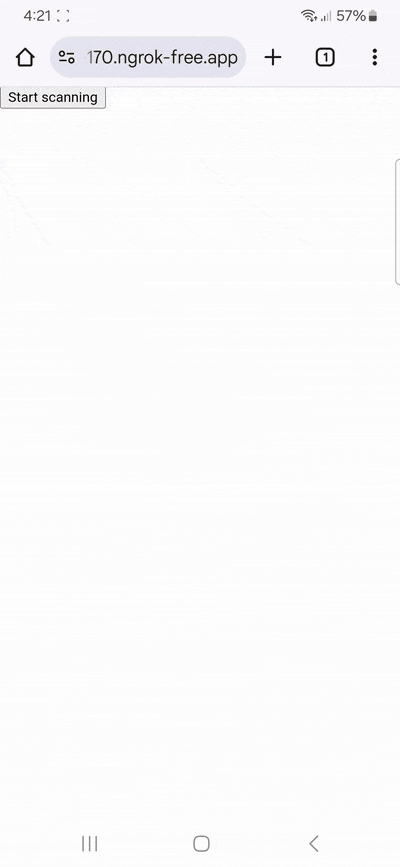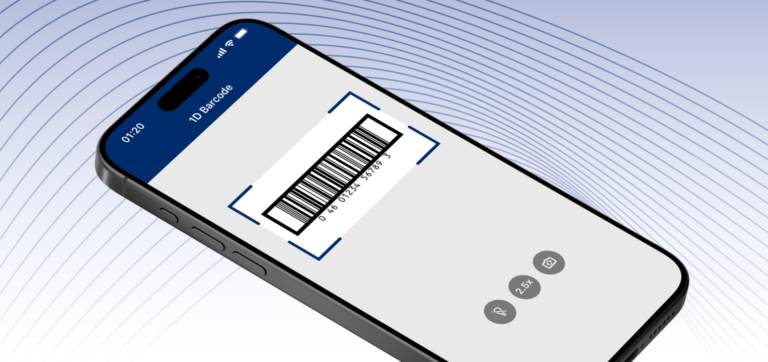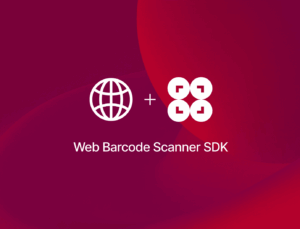Imagine you have a product that you would like to bring to the supermarket shelves. So that cashiers can scan it at checkout, you will need to put a barcode with an identifier for your product somewhere on the packaging. But how do you make sure your identifier isn’t already taken?
The solution to this problem is the Global Trade Item Number (GTIN). These identifiers are managed by GS1, an international non-profit organization tasked with standardizing barcodes and issuing GTINs.
What is GS1?
GS1 began its life in 1974 as the Uniform Code Council (UCC) to manage the Universal Product Code (UPC) standard, which had been introduced the same year to make supermarket checkouts more efficient. To ensure that the product barcodes were unique, they were allocated by the council. After all, if manufacturers could use just any code to label their products, duplicates would make clear identification a challenge.
When the UPC system was adopted in Europe as the European Article Number (EAN) in 1977, a similar institution was founded in Brussels.
Today, GS1 manages a wide variety of standards. The most influential is the GTIN, which combines various other standards, including ISBN, EAN, and UPC, into a universal number space.
What is a GS1 barcode?
A GS1 barcode conforms to standards defined by GS1, which ensures both the barcode’s global uniqueness and its compatibility with software systems. Barcode symbologies extended by GS1 standards often include so-called application identifiers. These two- to four-digit sequences tell barcode scanners which type of information comes next, allowing them to parse the data into a human-readable format.
Let’s take a look at this GS1-128 barcode:

It contains three pieces of information marked by the application identifiers (10), (11), and (15). These signify the batch or lot number, the manufacturing date, and the “best before” date, respectively. By parsing the data according to the application identifiers, barcode scanners can prepare it for further processing, e.g., for entry into a database.
Here is the parsed information:
Batch/lot number: 123456789
Manufacturing date: 24.07.2022
Best-before date: 24.07.2024To correctly decode a GS1 barcode, a barcode scanner must be able to recognize its special structure and parse the code according to the relevant GS1 standard.
Let’s take a look at the main GS1 barcode types available.
What types of GS1 barcodes are there?
There are GS1 standards for the following barcode symbologies:
- UPC
- EAN
- Code 128
- ITF
- DataBar
- Data Matrix
- QR Code
GS1 UPC

The GS1 UPC is an improved version of the first barcode ever scanned. The GS1 standard ensures uniqueness and global compatibility.
GS1 EAN

The international version of the GS1 UPC comes with the same advantages. The GS1 EAN is the organization’s most important barcode standard.
GS1-128

GS1’s variant of Code 128 supports application identifiers and thus enables the encoding of specific data elements.
GS1 ITF (ITF-14)

This 14-digit Interleaved 2 of 5 barcode also includes application identifiers. The GS1 ITF is used in logistics for labeling pallets, among other things.
GS1 DataBar

Also known as RSS (Reduced Space Symbology), the GS1 DataBar symbologies are rather compact and can encode additional data like expiration dates. This makes them perfect for labeling smaller food items.
The GS1 DataBar barcode has several variations, each suited for different use cases:
- GS1 DataBar Limited
- GS1 DataBar Expanded
- GS1 DataBar Omnidirectional
- GS1 DataBar Stacked
- GS1 DataBar Composite
- GS1 DataBar Truncated
GS1 DataMatrix

GS1 offers a standard for both square and rectangular Data Matrix codes. The larger data capacity of 2D barcodes makes them an excellent fit for encoding many different elements using application identifiers, e.g., the GTIN, batch or lot number, production date, or a serial number.
GS1 QR Code

The GS1 QR Code offers the same advantages as GS1 DataMatrix, including application identifiers for larger data elements. One example is the Extended Packaging URL, which lets manufacturers provide their customers with additional information about a product.
Do I need a GS1 barcode?
For businesses engaged in global trade, using GS1 barcodes is often expedient, if not mandatory. The healthcare, food, and logistics sectors, in particular, make heavy use of them. Many international retailers and distributors recognize GS1 standards, facilitating smooth cross-border transactions.
Even in national trade, large retailers like Walmart and popular e-commerce platforms like Amazon require suppliers and sellers to use GS1 barcodes for their products. This ensures consistency and facilitates efficient inventory management and checkout processes.
If a barcode is only meant to be used internally, then using a GS1 barcode is not necessary.
How much does it cost to get a GS1 barcode?
The actual costs of a GS1 barcode can only be calculated by taking the following factors into account:
- Cost of GS1 membership: Buying barcodes from GS1 directly (which is recommended) requires a membership. Fees vary depending on the country and the number of unique barcodes required. Typically, there is an initial fee and an annual renewal fee.
- Cost of GS1 company prefix: GS1 members are assigned a unique company prefix, the price of which depends on the number of products to be identified. Company prefixes need to be renewed annually.
- Cost of additional GS1 services: GS1 offers its members various additional services related to GS1 barcodes. Using these services further increases total costs.
Scanning GS1 barcodes with a mobile Barcode Scanner SDK
We provide our customers with an easy-to-integrate and reliable barcode scanning solution for iOS, Android, Windows, Linux, and Web.
The Scanbot Barcode Scanner SDK covers all common 1D and 2D barcode types, including GS1 barcodes. It features scanning speeds of 0.2 seconds per barcode with an accuracy of 98.2%. Our solution works entirely offline and scans barcodes accurately even in less-than-ideal conditions. Its built-in data parser presents structured data in two-dimensional barcodes in a human-readable format. This includes codes on bank transfer forms, medical plans, and boarding passes.
With the SDK’s Ready-to-Use UI Components, you can set up a fully functional GS1 barcode scanning app with just a few lines of code – even in a single, self-contained HTML file, thanks to the Scanbot Web Barcode Scanner SDK. Take a look:
<!DOCTYPE html>
<html lang="en">
<head>
<meta charset="UTF-8" />
<meta name="viewport" content="width=device-width, initial-scale=1.0, maximum-scale=1.0, user-scalable=0" />
<title>GS1 Barcode Parser</title>
</head>
<body style="margin: 0">
<button id="start-scanning">Start scanning</button>
<p id="result"></p>
<script type="module">
import "https://cdn.jsdelivr.net/npm/scanbot-web-sdk@7.0.0/bundle/ScanbotSDK.ui2.min.js";
const sdk = await ScanbotSDK.initialize({
enginePath:
"https://cdn.jsdelivr.net/npm/scanbot-web-sdk@7.0.0/bundle/bin/barcode-scanner/",
});
document
.getElementById("start-scanning")
.addEventListener("click", async () => {
const config =
new ScanbotSDK.UI.Config.BarcodeScannerScreenConfiguration();
config.scannerConfiguration.barcodeFormats =
["UPC_A", "UPC_E", "EAN_8", "EAN_13", "CODE_128", "ITF", "DATABAR", "DATABAR_EXPANDED", "DATABAR_LIMITED", "DATA_MATRIX", "QR_CODE"]
config.scannerConfiguration.gs1Handling = ScanbotSDK.Config.Gs1HandlingValues[4]
config.viewFinder.aspectRatio.height = 1;
config.viewFinder.aspectRatio.width = 2;
const scanResult = await ScanbotSDK.UI.createBarcodeScanner(config);
if (scanResult?.items?.length > 0) {
if (scanResult.items[0].barcode.isGS1Message) {
const data = scanResult.items[0].barcode.extractedDocument;
if (!data?.children?.length) {
document.getElementById("result").innerText = "";
return;
}
const results = data.children
.map((child) => {
const fields = child.fields;
if (!fields?.length) return undefined;
const dataSet = { label: "", value: "" };
for (const field of fields) {
const typeName = field.type?.name;
const text = field.value?.text || "";
if (typeName === "ElementDescription") {
dataSet.label = text;
} else if (typeName === "RawValue") {
dataSet.value = text;
}
}
return dataSet;
})
.filter((field) => field !== undefined);
if (!results.length) {
document.getElementById("result").innerText = "";
return;
}
document.getElementById("result").innerText = results
.map((item) => `${item.label}: ${item.value}\n`)
.join("\n");
} else {
document.getElementById("result").innerText = "No application identifiers found";
}
} else {
document.getElementById("result").innerText = "Scanning aborted by the user";
}
});
</script>
</body>
</html>
Feel free to copy the code into an HTML file and run it on your development server. When moving to production, we recommend you download the SDK and host it on your server instead of using a CDN.
Get started scanning and parsing GS1 barcodes today
You can run the Scanbot SDK from your project for 60 seconds per session without a license. For more in-depth testing, just generate a free trial license.
Our example apps on GitHub include implementations for various app development frameworks to help you with the integration process. We also offer free integration support via Slack and MS Teams to help with any remaining questions.
Already convinced? Then make the most of our fixed pricing model and request a quote today!
FAQ
What is the difference between GS1 barcodes and regular barcodes?
GS1 barcodes follow a globally standardized format to ensure unique identification across industries, whereas regular barcodes may not adhere to these standards. GS1 barcodes also encode structured data, such as expiration dates and batch numbers, making them useful for supply chain management.
How does GS1 ensure barcode uniqueness globally?
GS1 assigns a unique Company Prefix to each registered organization, ensuring that no two companies use the same identifier. This prefix, combined with product-specific numbers, guarantees global uniqueness.
What are the challenges of scanning GS1 barcodes in warehouse or retail environments?
Challenges include poor barcode printing quality, damaged labels, improper lighting conditions, and scanner compatibility issues. Warehouses may also face difficulties with scanning small or densely packed barcodes from a distance



